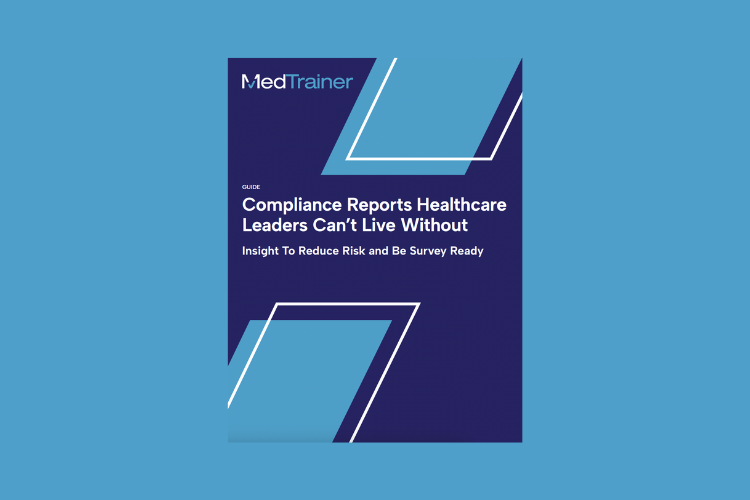Information integrity is paramount in the world of healthcare. Even simple errors like a misplaced decimal point or a misspelled word can impact patient care. When that happens, healthcare organizations need to know why. Medical auditing is critical in understanding why errors occur and how providers can prevent them in the future.
The primary objective of medical auditing is to identify any discrepancies, errors, or deficiencies in documentation or practices that could impact patient care. Auditing helps healthcare organizations maintain accurate and appropriate documentation, optimize revenue, minimize compliance risks, and improve overall operational efficiency. Above all, it’s an important step in creating accountability.
The Importance of Medical Auditing
From a compliance standpoint, medical auditing serves several important purposes within healthcare organizations.
First and foremost, it helps identify and correct errors or discrepancies in medical documentation. Auditing processes review medical charts, diagnoses, procedures, and treatment plans to ensure they are properly documented, coded, and billed. By detecting and rectifying errors, medical auditing helps reduce the risk of misdiagnosis, inappropriate treatments, and potential legal and financial consequences.
Medical auditing is also vital for compliance with regard to reimbursement guidelines. Auditing ensures that medical documentation, coding, and billing practices align with critical regulations and guidelines. Compliance with these standards not only protects healthcare organizations from penalties, it also ensures accurate reimbursement for services rendered.
The bottom line is that medical auditing promotes transparency, integrity, and accountability in healthcare delivery. It lays the groundwork for quality improvement and patient safety initiatives.
What Are Examples of Audits in Healthcare?
There are a wide variety of medical audits that a healthcare organization might face. Generally, however, they boil down to two types: external and internal audits.
External Audit
An external audit is conducted by an independent external auditing firm or individual. The main purpose of these audits is to provide an unbiased, objective evaluation of the records of an organization. External audits are typically carried out annually and are mandated by regulatory authorities.
Internal Audit
An internal audit is typically conducted within an organization. The primary objective of an internal audit is to evaluate internal controls, risk management processes, and operational efficiency of the organization. Internal auditors review the internal systems, processes, and procedures to identify weaknesses, inefficiencies, and areas for improvement.
Here’s a look at some examples of some of the most common types of external and internal audits a healthcare organization might participate in during a given year.
Examples of External Audits
Commercial Payer Audits
These audits are conducted by private insurance companies or commercial payers. They review healthcare claims and billing practices to ensure accuracy, detect fraud or abuse, and assess compliance with the payer’s policies and guidelines.
Federal Government Audits
These audits are performed by government agencies such as the Centers for Medicare and Medicaid Services (CMS). They aim to ensure compliance with federal healthcare programs like Medicare and Medicaid, reviewing claims, billing practices, and overall adherence to program requirements.
Third-Party Expert Audits
In some cases, healthcare organizations may engage third-party experts or external auditing firms to conduct specialized audits. These audits can cover various areas, such as revenue cycle management, cybersecurity, operational efficiency, or specific clinical practices.
Examples of Internal Audits
Compliance Audits
Compliance audits aim to ensure adherence to legal and regulatory standards. They evaluate whether healthcare organizations comply with laws such as the Health Insurance Portability and Accountability Act (HIPAA), the Affordable Care Act (ACA), and other industry-specific regulations.
Coding and Documentation Audits
These audits assess the accuracy and completeness of medical coding and documentation practices. They ensure that healthcare providers properly document patient encounters, assign appropriate diagnosis and procedure codes, and support medical necessity for services rendered.
Quality Assurance Audits
Quality assurance audits focus on assessing the quality and effectiveness of patient care. They review medical records, treatment protocols, and clinical outcomes to identify areas for improvement, monitor adherence to clinical guidelines, and ensure patient safety.
Privacy and Security Audits
These audits evaluate the privacy and security practices of healthcare organizations to ensure compliance with HIPAA regulations. They assess the handling of protected health information (PHI), implementation of security measures, and the organization’s response to security incidents or breaches.
Pharmacy Audits
Pharmacy audits focus on reviewing medication dispensing processes, inventory management, and compliance with pharmacy regulations. They verify that medications are dispensed accurately, prescriptions are properly documented, and controlled substances are securely stored.

The best compliance and credentialing reports to surface critical insights and keep you survey ready.
What Type of Audit Is the Most Common in Healthcare?
Audits are common in healthcare; however, there’s not always a delineated timeline for when they’ll occur or what they’ll focus on. For instance, internal audits should be conducted annually and focus on specific aspects of compliance. Conversely, external audits can happen at random, with very little notice. As a result, internal audits happen more frequently, but external audits require more engagement.
Additionally, the intensity of an audit often depends on how well-prepared for it you are. For instance, if you audit your credentialing practices and have a system like MedTrainer in place, your audit might only take a day or two. Conversely, if you haven’t run a compliance audit in three years, it might take you the better part of a month to get through. External audits further serve to compound the intensity, since you’ll need to cooperate with a third party.
Ultimately, there is no one single type of audit that’s more or less common. Healthcare organizations should get into the habit of performing internal audits annually and building systems that prepare them for any type of audit. The more organized and up-to-date you are, the simpler the audit will be — and the less likely you are to fret over them.
Improve Compliance With an Online Platform
Compliance software plays a vital role in assisting healthcare organizations in preparing for audits by streamlining and automating various compliance processes. MedTrainer goes a step further, enabling organizations to establish and maintain robust compliance programs by providing tools for policy creation, documentation management, risk assessment, and incident reporting.
MedTrainer helps healthcare organizations ensure adherence to regulatory standards and guidelines by offering features like real-time monitoring and proactive alerts. It also facilitates the organization and storage of relevant documentation, simplifying the retrieval of information during audits.
Ready to demonstrate your commitment to compliance? Schedule a free demo of MedTrainer today!
